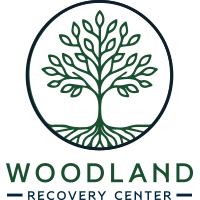Opioid use can quickly lead to physical dependence, which means the attempt to stop using opioids usually results in severe withdrawal symptoms. An opioid rehab center can offer relief from the immediate discomfort, as well as therapies that help put a stop to opioid use for good.
Woodland Recovery Center offers both inpatient and outpatient substance use treatment services. If you or a loved one needs help with opioid detox, give us a call today at 662.222.2989 and ask about getting help with opioid addiction.
Why Does Opioid Withdrawal Happen?
The term “opioids” refers to many different substances. Some of these include:
- Heroin
- Oxycodone
- Morphine
- Codeine
- Hydromorphone
- Oxymorphone
Some of these opioids are naturally occurring, while others are synthetic or semi-synthetic.
They all fall into the opioid category of drugs because they interact with the brain similarly. These substances bind to the natural opioid receptors in the brain, with a profound impact on brain chemistry and physiological functions like heart rate and breathing rate.
The body quickly grows physically dependent on opioids. When use is stopped, brain chemistry will eventually be restored to a state of equilibrium. However, the process of adjusting to the sudden absence of opioids is usually accompanied by severe opioid withdrawal symptoms.
Common Signs of Opioid Withdrawal
Opioid withdrawal symptoms are similar for most people, but the intensity and duration of symptoms can vary based on the level of dependence and type of opioid used.
Withdrawal symptoms usually begin within hours of the last dose and may last from a few days to a week or longer.
Some of the most common signs of opioid withdrawal include:
- Nausea
- Vomiting
- Diarrhea
- Chills and sweating
- Shaking or muscle tremors
- Muscle aches and pains
- Abdominal pain
- Difficulty sleeping
- Changes in appetite
The most dangerous symptom of opioid withdrawal is dehydration. In severe cases, dehydration can even lead to death when opioid detox is attempted without medical supervision.
Depending on a person’s overall physical health, opioid withdrawal can lead to additional health complications, such as heart failure due to elevated blood sodium levels.
Getting Help for Opioid Withdrawal Symptoms
Opioid withdrawal symptoms are a sign it’s time to ask for professional help. Undergoing opioid detox under medical supervision is far safer than attempting a detox alone, and there’s a much greater chance of completing detox when it happens with professional support.
Detoxing at a treatment center also puts a patient in touch with resources and programs that can support long-term recovery from opioid use. Treatment center professionals will help identify the underlying factors that have contributed to opioid use and create a treatment plan designed to help a patient make lasting changes.
Completing a detox removes opioids from the body, but detox is just the first step in substance use treatment. Treatment programs offer a combination of therapies and treatments combined with additional support, like treatment for co-occurring mental health conditions or support processing unresolved trauma.
Successfully overcoming opioid abuse is possible, but it usually requires a comprehensive treatment program that can help a patient identify the mental, emotional, social, and environmental factors that must change to support a lasting recovery.
Opioid Detox at Woodland Recovery Center
Woodland Recovery Center strives to help every patient overcome opioid use. Our facility offers detox, inpatient, and outpatient treatment services, and aftercare support so that patients receive the assistance they need at every step in their recovery process.
Overcoming opioid addiction is difficult enough without attempting to manage the withdrawal symptoms alone. Our treatment team can provide you with the medical support you need to make opioid detox successful and lasting.
Call 662.222.2989 today to learn more about getting support for opioid abuse at Woodland Recovery Center.



